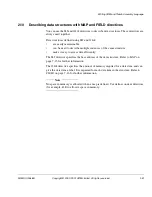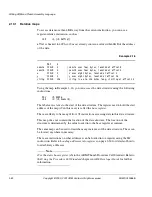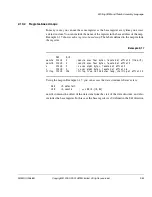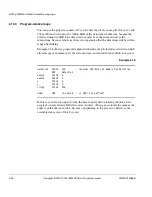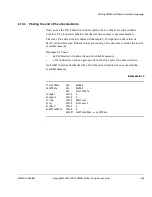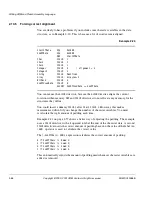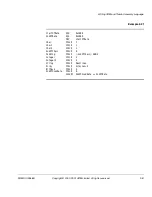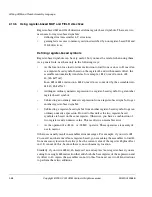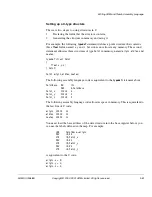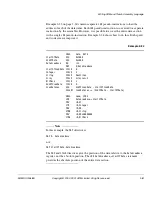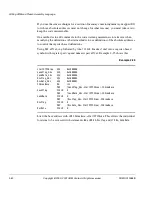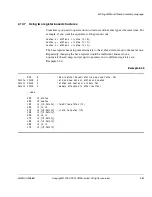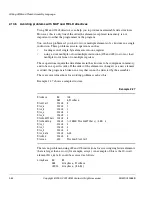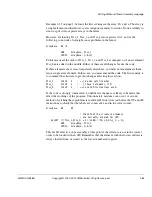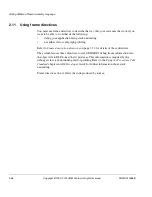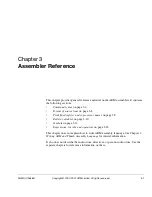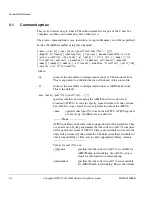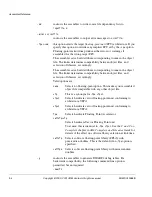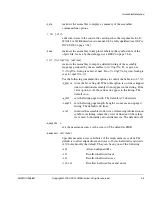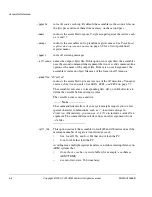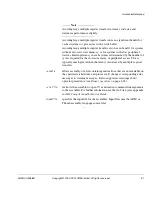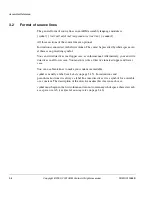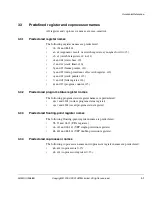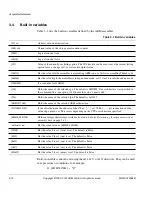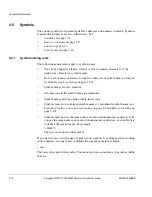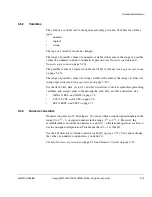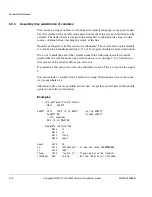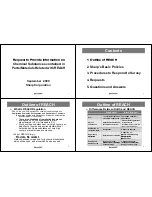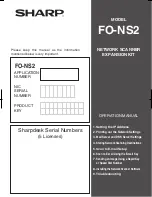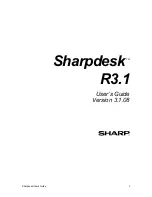
Writing ARM and Thumb Assembly Language
ARM DUI 0068B
Copyright © 2000, 2001 ARM Limited. All rights reserved.
2-65
Example 2-27 on page 2-64 loads the first six items in the array
Misc_data
. The array is
a single element and therefore covers contiguous memory locations. No one is likely to
want to split it into separate arrays in the future.
However, for loading
Misc_I
,
Misc_J
, and
Misc_K
into registers r0, r1, and r2 the
following code works, but might cause problems in the future:
ArrayBase RN r9
ADR ArrayBase, Misc_I
LDMIA ArrayBase, {r0-r2}
Problems arise if the order of
Misc_I
,
Misc_J
, and
Misc_K
is changed, or if a new element
Misc_New
is added in the middle. Either of these small changes breaks the code.
If these elements are accessed separately elsewhere, you must not amalgamate them
into a single array element. In this case, you must amend the code. The first remedy is
to comment the structure to prevent changes affecting this section:
Misc_I FIELD 4 ; ==} Do not split/reorder
Misc_J FIELD 4 ; } these 3 elements, STM
Misc_K FIELD 4 ; ==} and LDM instructions used.
If the code is strongly commented, no deliberate changes are likely to be made that
affect the workings of the program. Unfortunately, mistakes can occur. A second
method of catching these problems is to add
ASSERT
directives just before the
STM
and
LDM
instructions to check that the labels are consecutive and in the correct order:
ArrayBase RN R9
; Check that the structure elements
; are correctly ordered for LDM
ASSERT (((Misc_J-Misc_I) = 4) :LAND: ((Misc_K-Misc_J) = 4))
ADR ArrayBase, Misc_I
LDMIA ArrayBase, {r0-r2}
This
ASSERT
directive stops assembly at this point if the structure is not in the correct
order to be loaded with an
LDM
. Remember that the element with the lowest address is
always loaded from, or stored to, the lowest numbered register.

